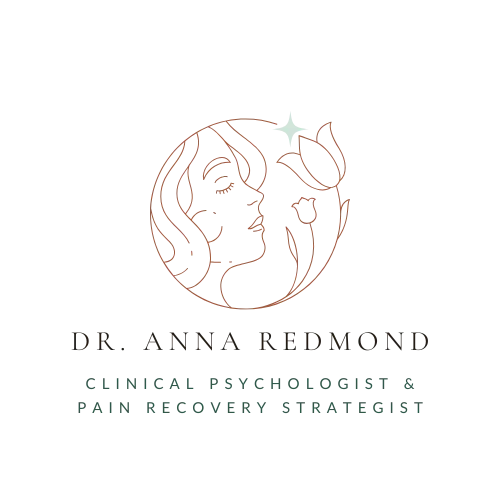Connect with me!
Tell me the number one thing that you want to understand about your pain?

A letter to your brain.
You’ve probably heard that it’s helpful to journal for chronic pain. I think there are probably two general types of journaling out there:
Tracking your pain level, describing how it feels, and outlining patterns that your pain takes
Writing out your thoughts and your emotions as you move through your chronic pain journey.
Certainly, both of these kinds of journals can be helpful in their own right (although I think most people and providers are tracking the wrong things for #1 when we are talking about years of chronic pain).
The writing I’m talking about in this post today, however, is not either of those two things.
I’m talking about writing a letter to your brain.
Here’s why:
For years, your brain has gotten practiced at producing pain. With repetition and practice, your brain has adapted and developed neural pathways in response to repeated perceptions of threat, fear, and pain. Once we have developed this pathway, it becomes stronger the more it is repeated, and can be triggered more and more easily.
Within your brain are cells that work together to produce "happy chemicals". These hormones work throughout your body and can actually prevent danger messages from reaching your brain. They are so powerful that they can turn OFF your threat detection system. They can be the reason your brain decides that making pain is not helpful or necessary in that particular moment.
Did you know that you (yourself!) can create a detour around this “pain pathway”. There are several ways to do this, such as, by providing different experiences for yourself that contradict what your brain has practiced. One foundational way to create a detour, however, is by writing down your thoughts and cleaning up the words you use when you talk about pain (moving generally from danger to safety). When you do this, you create some distance between yourself and the thoughts, so that you can think more freely.
When we write down our thoughts and connect them with thoughts, emotions, experiences, and physical sensations, we can create new neurological pathways.
Here’s how:
You’re creating awareness of pathways that repeat themselves.
You’re detaching, taking a step back, to get a bird’s eye view of the whole picture.
You’re paving the way for new pathways, bypassing the pesky older ones, and quieting them.
There are a couple of writing themes that I think can be helpful toward resolving chronic pain (along with new ways of moving, thinking, and understanding):
Writing with compassion: Lending compassion to your brain, who is only trying to do its job to protect you. Lending compassion to yourself, letting go of the shame, frustration, depression, and all of the unhelpful ways you tried to cope when you didn’t understand your pain the way that you do now (or will!).
Writing your story: Writing out your story to your brain, but this time, acknowledging the brain’s role in maintaining the cycle and how you understand this now. How can you clean up the pain language you use in your own pain story? Which words within your story put your threat detection system on high alert? Which words trigger "happy chemicals" and turn your threat detection system off?
Letting your brain know that it doesn’t have to fear the pain, certain activities, certain movements, certain emotions, certain stressors. Letting your brain and your body know that it is safe.
Consider this as one strategy toward reprogramming your nervous system. Write a letter to your brain once, twice, or every day. Each time, including new knowledge, more compassion, and more confidence as you move you and your brain from a place of danger to a place of safety.
Here are some prompts to get you started:
Dear brain, I know that my pain cannot exist without you…
Dear brain, I forgive you for…
Dear brain, I know you’ve felt threatened by…
Dear brain, we’ve both just been doing our best, with the information and resources that we had. Here’s how we move forward…
Dear brain, we’ve been working on this pain thing together for years…
Dear brain. I’m not afraid of my pain anymore. My body is safe and I know this because…
Dear brain, I am confident in myself, my persistence, and my ability to overcome pain. Here is the evidence that I have to support this…
Dear brain, today I ______. I was sore but safe….
Dear brain, I learned about plasticity today and I know that pain isn’t forever. I want to remind you of all of the times that I’ve seen my pain change…
Dear brain, I am surrounded by caring and supportive people…
Dear brain, I understand my pain now. My body is safe. Here’s how you and I can keep my body calm…
Happy writing!
BACK PAINCAN FEMALES HANDLE MORE PAINCAN MENOPAUSE CAUSE PAINCHRONIC PAIN CYCLECHRONIC PAIN
© 2024 | Anna Redmond, LLC | drannaredmond.com
